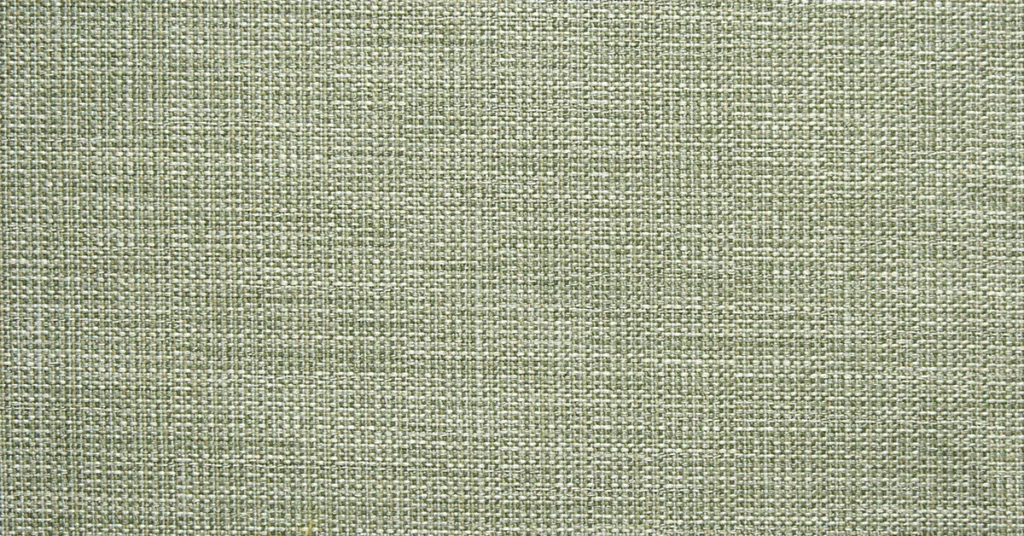When it comes to making sustainable choices in fashion, the fabric you choose plays a huge role. The fashion industry is known for its environmental impact, from water pollution to high carbon emissions, but eco-friendly fabrics are slowly making their way to the forefront. Among these eco-conscious materials, ramie fabric stands out as a truly sustainable option, and it’s high time your wardrobe embraces this remarkable textile.
If you’re wondering what ramie fabric is, why it’s eco-friendly, and how it compares to other fabrics like cotton and linen, you’ve come to the right place. In this article, we will dive deep into why ramie fabric is the eco-friendly choice your wardrobe needs, exploring its benefits, versatility, and the environmental advantages it brings.
ALSO READ: Explore The Best Kissanime Alternatives For Anime Lovers
What Is Ramie Fabric?
Ramie fabric is made from the fibers of the ramie plant, scientifically known as Boehmeria nivea. This plant is part of the nettle family and is native to East Asia. Known for its exceptional durability, strength, and resistance to wrinkles, ramie has been used for thousands of years. In fact, it has been a popular textile in ancient civilizations, particularly in China, where it was woven into garments and textiles.
The process of making ramie fabric is quite unique. The fibers are extracted from the stalks of the ramie plant, then treated and spun into yarn. The result is a fabric that is not only strong and resistant to degradation but also naturally resistant to mold, mildew, and bacteria. These properties make ramie fabric one of the most sustainable textiles available, as it has a long lifespan and requires fewer resources to maintain.
Why Ramie Fabric Is Eco-Friendly
Sustainable Sourcing and Low Environmental Impact
One of the biggest advantages of ramie fabric is its eco-friendly cultivation process. Unlike conventional cotton, which requires large amounts of water, pesticides, and chemical fertilizers, ramie is a much more sustainable crop. Ramie plants are hardy and can grow in poor soil conditions, making them an ideal alternative for sustainable agriculture. The plant doesn’t require as much water or fertilizer as cotton, and it also has a faster growth rate, reducing the need for extensive land use.
Additionally, ramie plants are naturally resistant to pests and diseases, which means they require minimal use of chemical pesticides and herbicides. This makes ramie a much cleaner and safer option for both the environment and farmers. As a result, choosing ramie fabric over other textiles can significantly reduce your carbon footprint and contribute to the health of the planet.
Biodegradable and Low Waste
One of the most significant environmental benefits of ramie fabric is that it is biodegradable. While synthetic fabrics like polyester and nylon take hundreds of years to decompose, ramie will break down naturally in the environment. This means that clothing made from ramie fabric has a much lower environmental impact at the end of its life cycle.
Moreover, ramie is also known for its durability. Clothes made from ramie fabric tend to last longer than those made from other textiles, which means less frequent replacement and less waste. This quality makes it an ideal choice for those looking to build a more sustainable and long-lasting wardrobe.
Low Water Usage
Water usage is one of the most critical factors in evaluating the sustainability of a fabric. For instance, cotton production is notorious for its excessive water consumption, with estimates suggesting that it takes around 2,700 liters of water to produce just one cotton t-shirt. On the other hand, ramie fabric requires far less water to produce. This is due to the plant’s ability to thrive in low-water conditions, reducing the strain on local water sources.
By choosing ramie, you’re not only helping reduce water consumption but also supporting fabrics that contribute to more sustainable farming practices.
Energy Efficiency in Manufacturing
The production process of ramie fabric is relatively energy-efficient compared to other textiles. While traditional fabrics such as cotton require significant energy input in terms of spinning, weaving, and dyeing, the production of ramie fabric involves fewer chemical processes and less energy consumption. Moreover, the fact that ramie fibers do not require chemical treatments to maintain their strength makes it a less energy-intensive option for fabric manufacturing.
This energy efficiency makes ramie fabric an excellent choice for eco-conscious consumers who are looking to reduce their overall carbon footprint. With energy use being one of the major contributors to greenhouse gas emissions in the textile industry, opting for low-energy manufacturing processes can make a real difference in minimizing global environmental impact.
Non-Toxic and Safe for the Skin
Ramie fabric is completely natural and free from toxic chemicals, unlike many synthetic fabrics that often contain harmful substances such as phthalates or formaldehyde. This makes ramie a safe option for people with sensitive skin, as it is hypoallergenic and less likely to cause irritation or allergic reactions.
Furthermore, the process of turning ramie into fabric doesn’t require the use of harmful dyes or finishing agents, which are often linked to water pollution and soil contamination. This ensures that ramie garments are not only safe for the wearer but also have minimal environmental impact during production.
Versatility and Durability
Ramie fabric is incredibly versatile, and it can be used to make a wide range of garments, including shirts, dresses, pants, jackets, and even home textiles like bed linens and upholstery. Ramie has a natural sheen and crisp texture, which gives it a sophisticated look while also being breathable and lightweight. This makes it perfect for warmer climates or for summer wear, but it is also suitable for all-year-round wear, especially when blended with other natural fabrics like cotton and linen.
Another advantage of ramie is its strength and durability. Known as one of the strongest natural fibers, ramie fabric is highly resistant to tearing and stretching. Even after multiple washes, it maintains its shape and strength. This makes it an excellent investment for those who want long-lasting, durable clothing that will stand the test of time.
Low Maintenance
One of the reasons ramie fabric is often preferred for eco-conscious fashion is its ease of maintenance. Unlike cotton, which can shrink or lose its shape after a few washes, ramie fabric holds its structure and remains wrinkle-free. This means less time spent ironing or steaming, which not only saves time but also reduces the energy consumption associated with maintaining clothing.
A Renewable Resource
As mentioned, ramie plants grow quickly and can be harvested multiple times per year. This renewable resource makes ramie an even more appealing option for eco-conscious shoppers who want to support fabrics that have minimal environmental impact throughout their lifecycle. The ability to harvest the ramie plant multiple times makes it an excellent choice for sustainable farming and textile production.
How Ramie Compares To Other Fabrics
While ramie offers a host of environmental benefits, it’s helpful to understand how it compares to other popular fabrics in terms of sustainability.
Ramie vs. Cotton
Cotton is often touted as a natural, eco-friendly fabric. However, its environmental impact is significant. Cotton farming requires large amounts of water and pesticides, and its production is linked to soil degradation and water pollution. While organic cotton is a more sustainable alternative, it still requires substantial water and land use.
In contrast, ramie is a far more sustainable option. It grows with minimal water, requires fewer pesticides, and can thrive in poor soil. Additionally, ramie fabric is stronger and more durable than cotton, meaning it will likely last longer and require fewer replacements.
Ramie vs. Linen
Linen is another natural fabric known for its eco-friendly properties. It is made from the flax plant, which requires little water and is biodegradable. However, the production process of linen can still be quite energy-intensive and requires chemical treatments in some cases.
Ramie, on the other hand, requires fewer chemicals in its production process, making it a less toxic and lower-impact choice. Both fabrics are breathable and lightweight, but ramie is often preferred for its superior strength and durability.
How To Incorporate Ramie Fabric Into Your Wardrobe
If you’re ready to embrace ramie fabric, there are plenty of ways to incorporate it into your wardrobe. Here are some ideas:
- Shirts and Blouses: Ramie’s breathable nature makes it ideal for lightweight, airy tops, especially in warmer climates.
- Dresses: Whether casual or dressy, ramie dresses are not only stylish but comfortable, and their durability ensures they will last for years.
- Outerwear: Ramie can be blended with other fibers like wool to create lightweight jackets or coats, perfect for transitional weather.
- Home Textiles: Beyond clothing, ramie is also a great option for creating eco-friendly home textiles, such as bed linens and upholstery.
Conclusion
In a world where sustainable fashion is more important than ever, ramie fabric stands out as a true eco-friendly choice. Its low environmental impact, durability, and versatility make it a fabric worth considering for your next wardrobe update. By choosing ramie, you’re not only making a stylish and functional choice but also taking a step toward a more sustainable future.
FAQs
What is ramie fabric?
Ramie fabric is a natural textile made from the fibers of the ramie plant (Boehmeria nivea), known for its strength, durability, and eco-friendly properties. It’s often compared to linen and is considered a sustainable alternative to cotton and synthetic fabrics.
Is ramie fabric biodegradable?
Yes, ramie is completely biodegradable. Unlike synthetic fabrics, which can take hundreds of years to decompose, ramie breaks down naturally, making it an environmentally friendly option at the end of its life.
Does ramie fabric require a lot of water to produce?
No, ramie fabric is more water-efficient than cotton. The ramie plant can thrive in low-water conditions, making it a sustainable choice for fabric production.
Is ramie fabric safe for sensitive skin?
Yes, ramie is hypoallergenic and free from harmful chemicals, making it a safe choice for those with sensitive skin or allergies.
How does ramie compare to linen?
Both ramie and linen are eco-friendly fabrics, but ramie is often stronger, more durable, and requires fewer chemicals during production. Both fabrics are breathable and great for warmer weather.
ALSO READ: Fast Track Trading: Master The Markets With Speed And Strategy



